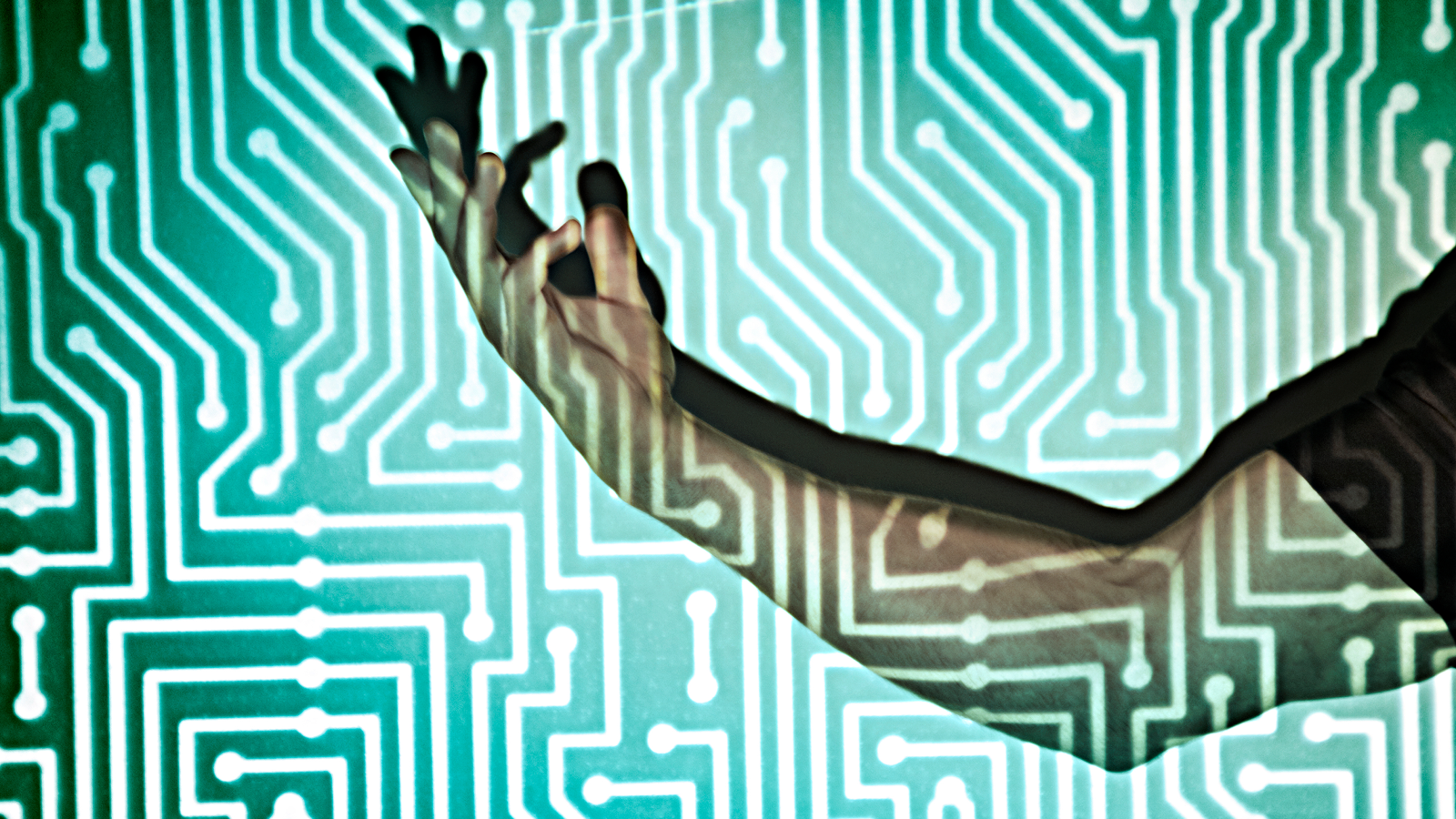
A scientist in Japan has demonstrated how the human body could be used like a computer to process data and solve complex problems.
This breakthrough is possible because human tissue has properties useful for a kind of data processing called “reservoir computing,” the author of the study Yo Kobayashi, associate professor in the University of Osaka’s Department of Mechanical Science & Bioengineering, wrote in a new study published March 20 in the journal IEEE Access.
In reservoir computing, inputs are fed into a system with a large number of “nodes” or “dimensions” (the reservoir) and then interpreted to isolate important data or predict future results. While in many cases the reservoir is digital, it’s possible to use other physical systems.
To demonstrate the possibility of using human tissue to process data, the researcher asked participants to bend their wrists at a variety of angles.
He then used ultrasound to image the resulting deformation in the muscles. From that data, he built a computer model of a physical reservoir that could successfully emulate nonlinear dynamical systems in benchmark testing.
It achieves this by using the deformation field within the muscle to represent the state of the reservoir. The nonlinearity — the fact that the input doesn’t affect nodes in the reservoir in a straight line — enables input signals to be mapped onto a high-dimensional state space, which facilitates complex calculations. In this case, the input is the signal pattern of the wrist joint angle.
Related: 3D-printed human brain tissue works like the real thing
“One potential application area of this technology is wearable devices,” Kobayashi said in a statement. “In the future, it may be possible to use our own tissue as a convenient computational resource. Since soft tissue is present throughout the body, a wearable device could delegate calculations to the tissue, enhancing performance.”
He also suggested that the process could be applied to medical and life support devices, as well as other human-machine interaction technology, relying on human tissue for additional processing resources.
Computing in a bucket of water
One common way to illustrate how reservoir computing works is the “bucket of water” method. In this scenario, a series of water tanks arranged in a grid or other formation comprise the reservoir, with pipes of various sizes linking them nonlinearly. This means that water doesn’t flow in a straight line from one tank to another. Instead, adding water or perturbations to the system can change the level of water tanks throughout, or that water could exit a tank at one point but then be reintroduced later as the result of a single input.
Inputs are reflected throughout the system in the form of water levels fluctuating in the various tanks, and dynamically changing over time. The state of the reservoir is captured over time by measuring the level of water in each tank, and then a trainable computer layer reads and interprets the results.
The reservoir is responsible for “distorting” or “blending” the input signal in many different nonlinear ways, generating a diverse set of temporal features. The reservoir doesn’t explicitly “solve” nonlinear equations in a traditional numerical sense. Instead, it learns to mimic the input-output behavior of the system governed by those equations. Nonlinearities within the reservoir allow it to capture and represent nonlinear relationships present in the input data and the underlying system dynamics.
Human tissue can function as a reservoir because it shares some qualities with a water-based reservoir. For one, it has nonlinear qualities, specifically stress-strain nonlinearity, which means that the relationship between stress applied to tissue and the resulting strain isn’t a straight line. It’s also viscoelastic, meaning that it has both elastic (like a rubber band) and viscous (like a thick fluid) qualities when deformed — in other words, it has a physical “memory” of its past deformation and can thus store information.
Beyond the aforementioned applications, reservoir computing has shown promise in predicting chaotic systems like the weather. It’s also been proposed as a way to predict other systems that vary over time, things like stock prices or air quality. By interpreting previous data through the system, it may be possible to predict future outcomes.
As Kobayashi pointed out, his work is just a first step — while reasserting its potential in the future.
“This study only performed benchmark tests; hence, it is imperative to determine the applicability of the actual computational process in future scenarios. However, these findings pave the way for the successful exploitation of human tissue dynamics in a wide range of computational tasks and applications.”
Premium IPTV Experience with line4k
Experience the ultimate entertainment with our premium IPTV service. Watch your favorite channels, movies, and sports events in stunning 4K quality. Enjoy seamless streaming with zero buffering and access to over 10,000+ channels worldwide.
















